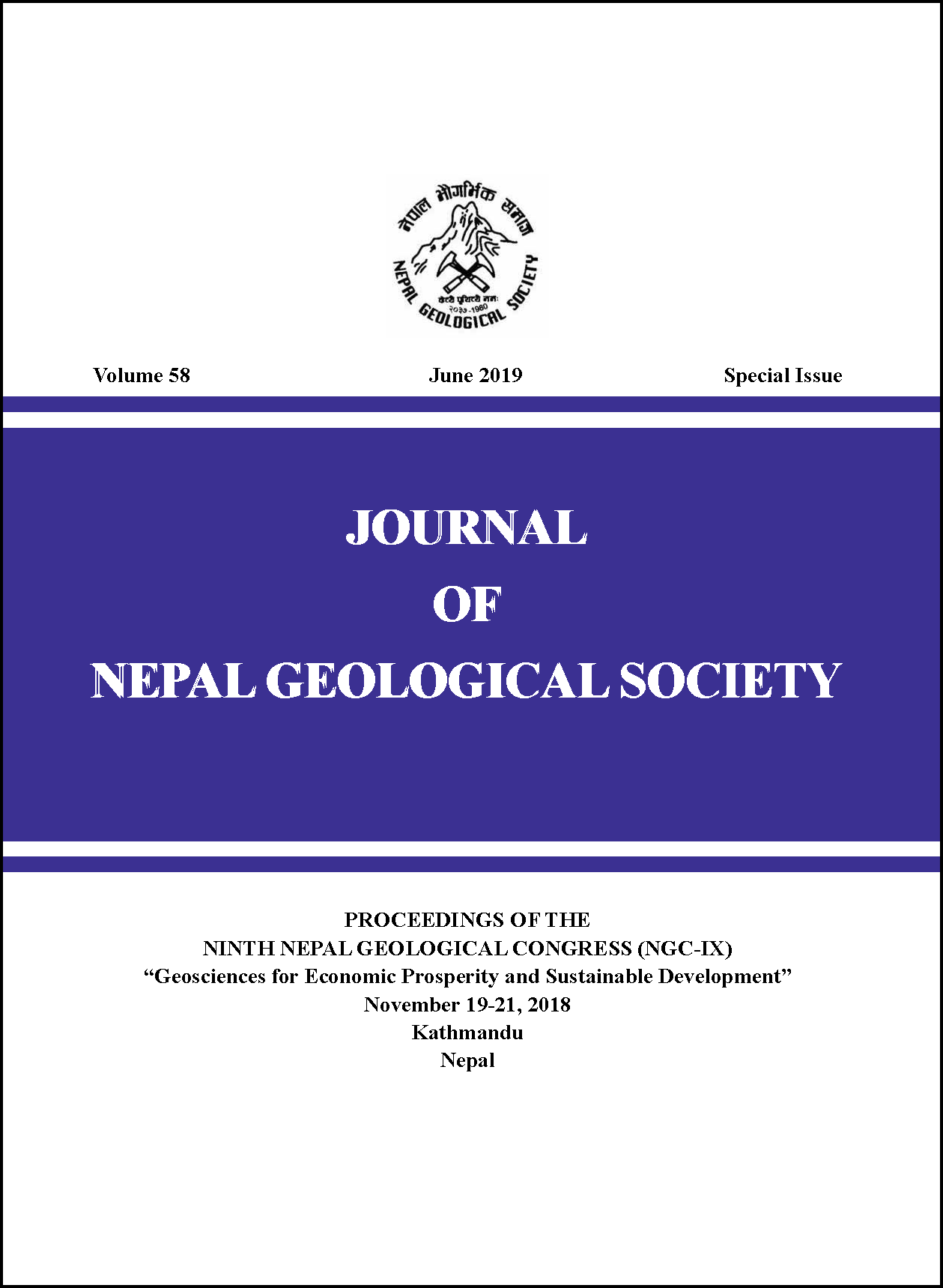Metamorphism of Jhyallaphay-Barpak-Bhachchek area of Gorkha District, Lesser Himalaya and Higher Himalaya, Central Nepal
DOI:
https://doi.org/10.3126/jngs.v58i0.24595Keywords:
Inverted metamorphism, Metamorphic Facies, Garnet porphyroblast, MCT Zone, IsogradAbstract
The study is focused on geological mapping, petrography and metamorphism of Jhyallaphat–Barpak–Bhachchek area, a part of Gorkha District, Central Nepal using a base of 1:25000 scale covering an area of 139.80 sq. km. The rocks of the study area can be broadly divided into two tectonic zones; the Lesser Himalaya consisting of fie lithological units, and the Higher Himalaya consisting of Formation I of the Tibetan Slab. Three metamorphic zones can be distinguished in the study area; biotite zone, garnet zone and kyanite zone. The biotite zone of the mineral assemblage in pelitic rocks consists of biotite+muscovite+chlorite+quartz, in psammitic rocks comprises of biotite+muscovite+chlorite+feldspar+quartz and in carbonate rocks comprises of biotite+muscovite+calcite/dolomite+feldspar+quartz, respectively. These mineral assemblages show that the area belongs to the greenschist facies. The mineral assemblage of the garnet zone in pelitic rocks constitutes garnet+biotite+muscovite+chlorite+quartz, and in psammitic rocks constitutes of garnet+biotite+muscovite+feldspar+quartz. The minerals assemblages found within the biotite and garnet zones represent the well-known inverted metamorphism in the Lesser Himalaya. Mineral assemblage of the kyanite zones constitutes of kyanite+garnet+biotite+muscovite+feldspar+quartz. The mineral assemblages of the both garnet and kyanite zones show that the area belongs to the epidote amphibolite facies.
The bedding and foliation planes are almost parallel, showing that isograds also cut across the foliation. Therefore, the main metamorphic event should have followed development of foliation in the area. The rocks of the area show at least two metamorphic events: syntectonic prograde and post-tectonic retrograde. Syn-tectonic prograde metamorphism (M1), which has grown during a single phase of deformation and most frequently encountered garnet prophyroblast. Metamorphic deformation is represented by the presence of metamorphic foliation, stretching lineation, and S-C fabric. Post-tectonic retrograde metamorphism (M2), which is followed by retrograde mineral formation changing its P-T condition from high to low grade minerals, such as the formation of the biotite and chlorite minerals around the rims of the garnet porphyroblasts.
Downloads
Downloads
Published
How to Cite
Issue
Section
License
© Nepal Geological Society




